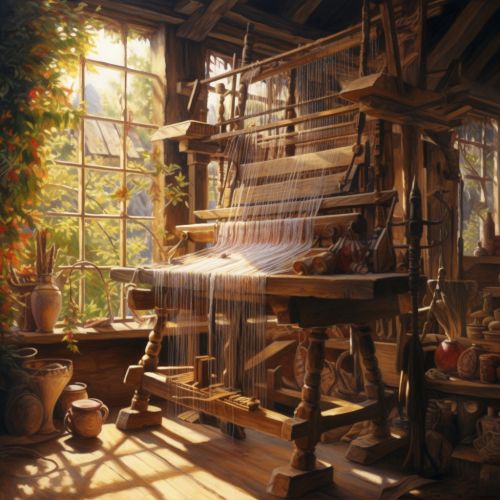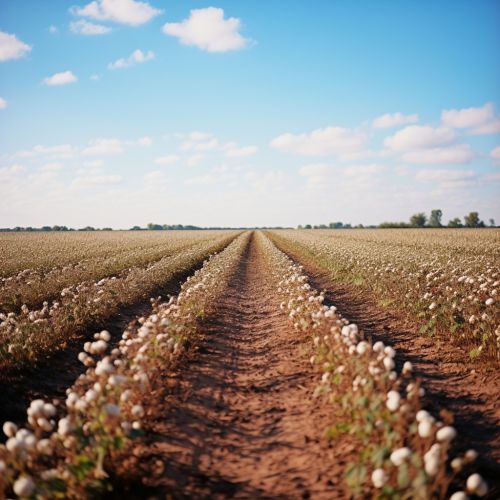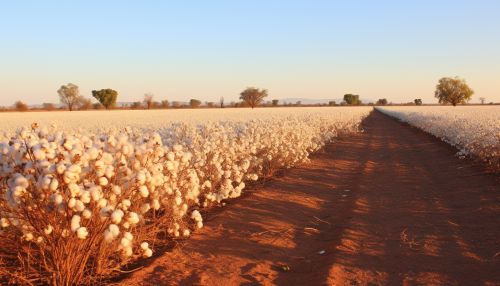Textile Industry
History
The textile industry has a long and storied history, dating back to the dawn of civilization. The earliest evidence of textile production can be traced back to prehistoric times, with archaeological findings of dyed flax fibers found in a cave in the Republic of Georgia suggesting that people were making cloth as far back as 34,000 BC.


In the ancient world, textiles were a crucial part of society. In ancient Egypt, for example, linen was used for mummification and for the manufacture of other garments. The production of textiles was also a major industry in ancient China, where silk was cultivated and woven into luxurious fabrics.
The Middle Ages saw the rise of guilds, which were associations of artisans or merchants who controlled the practice of their craft in a particular town. The textile industry was a major part of this guild system, with weavers, dyers, and spinners each having their own guilds.
The Industrial Revolution in the 18th century brought about significant changes in the textile industry. The invention of the spinning jenny, the water frame, and the spinning mule dramatically increased the speed and efficiency of textile production, making it possible to produce cloth on a much larger scale.
In the 20th century, the textile industry continued to evolve with the development of synthetic fibers such as nylon and polyester. Today, the textile industry is a global industry, with major production centers in countries such as China, India, and Bangladesh.
Production Process
The production process in the textile industry involves several stages, from the cultivation of raw materials to the manufacturing of finished products. The first stage is the cultivation of natural fibers such as cotton, wool, and silk. These fibers are then processed and spun into yarn, which is then woven or knitted into fabric.


The fabric is then dyed or printed, after which it is finished by processes such as bleaching, shrinking, or coating. The finished fabric is then cut and sewn into garments or other textile products.
The production process also involves the use of various types of machinery. For example, spinning machines are used to spin fibers into yarn, while weaving machines are used to weave yarn into fabric. Dyeing machines are used to dye or print the fabric, and finishing machines are used to finish the fabric.
Types of Textiles
There are many different types of textiles, each with its own unique properties and uses. Some of the most common types of textiles include:
- Cotton: Cotton is a soft, fluffy staple fiber that grows in a boll, or protective case, around the seeds of the cotton plants. It is the most widely used natural fiber cloth in clothing today.
- Wool: Wool is the textile fiber obtained from sheep and other animals, including cashmere and mohair from goats, angora from rabbits, and other types of wool from camelids.
- Silk: Silk is a natural protein fiber, some forms of which can be woven into textiles. It is produced by certain insect larvae to form cocoons.
- Linen: Linen is a textile made from the fibers of the flax plant. It is laborious to manufacture, but the fiber is very absorbent and garments made of linen are valued for their exceptional coolness and freshness in hot weather.
- Polyester: Polyester is a category of polymers that contain the ester functional group in their main chain. As a specific material, it most commonly refers to a type called polyethylene terephthalate (PET).
- Nylon: Nylon is a generic designation for a family of synthetic polymers, based on aliphatic or semi-aromatic polyamides.
Environmental Impact
The textile industry has a significant impact on the environment. This impact comes from the cultivation of raw materials, the production process, and the disposal of textile waste.
The cultivation of raw materials such as cotton requires large amounts of water and pesticides, which can lead to water pollution and soil degradation. The production process also involves the use of large amounts of water and energy, as well as the emission of greenhouse gases.
The disposal of textile waste is another major environmental issue. Each year, millions of tons of textile waste are discarded, much of which ends up in landfills or is incinerated. This waste includes not only discarded garments, but also offcuts and scraps from the production process.
There are, however, efforts being made to reduce the environmental impact of the textile industry. These include the development of more sustainable production methods, such as organic farming and waterless dyeing, as well as initiatives to recycle textile waste and promote more sustainable consumption habits.
Future Trends
The future of the textile industry is likely to be shaped by several key trends. One of these is the increasing demand for sustainable and ethically produced textiles. Consumers are becoming more aware of the environmental and social impact of their consumption habits, and are increasingly seeking out products that are made in a sustainable and ethical manner.
Another key trend is the rise of digital technology. This includes not only digital printing and dyeing techniques, but also the use of digital technology in the design and production process. For example, 3D printing is being used to create textiles with unique properties, while artificial intelligence is being used to optimize the production process.
A third key trend is the increasing importance of functional textiles. These are textiles that have been engineered to have specific functional properties, such as water resistance, fire resistance, or antimicrobial properties. The demand for these functional textiles is being driven by sectors such as healthcare, sportswear, and protective clothing.
See Also
- Spinning Jenny - Water Frame - Spinning Mule - Cotton - Wool - Silk - Linen - Polyester - Nylon
